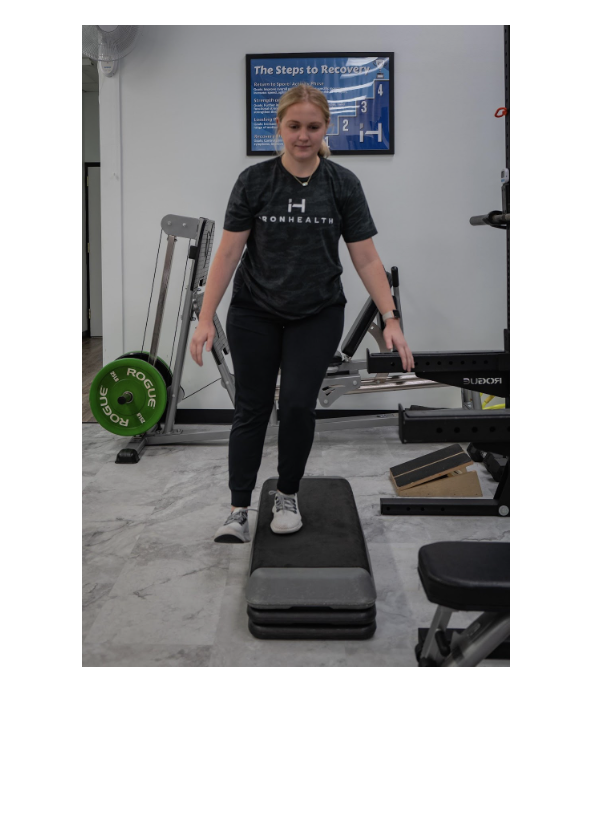With marathon season upon us, many runners in training have upped their weekly mileage in preparation. With this, comes an uptick in the number of overuse injuries seen. Among these, is hip flexor tendinopathy. The muscles of the hip generate much of the force required for distance running. If these muscles are not operating optimally, multiple pathologies, including hip flexor tendinopathy can occur.
What is the hip flexor and what does it do?
The hip flexor is comprised of three muscles: the psoas major and minor, the iliacus and the rectus femoris. The iliacus and psoas muscles come together to form the iliopsoas which is the muscle most frequently referred to as the hip flexor The rectus femoris is one of the 4 major muscles of the quadriceps group. However, it crosses the hip joint and aids in hip flexion so it is too considered part of the hip flexor. Other muscles such as the adductor group and tensor fascia latte also play a role in hip flexion.
In running, the hip flexor acts concentrically during swing phase to elevate the hip and aid in toe clearance. It then acts eccentrically during stance phase to slow extension of the hip.
What is hip flexor tendinopathy?
Hip flexor tendinopathy is characterized by pain often in the anterior (front) of the hip that is often brought on by increased activity. Pain often subsides at rests, but as injury progresses, may become painful with walking in addition to running activities. Some athletes experience a popping or snapping sensation in the front of the hip or back. The presence of inflammation around the hip flexor tendons may or may not be present. Diagnostic imaging is not typically required to diagnose, however, your physician may order imaging studies to rule out other causes of pain.
Other important musculature for distance running?
Complementing the rule of the hip flexor in swing phase are the muscles responsible for the deceleration of swing phase and push off during stance phase. These muscles include: the gluteus maximus, gluteus medius and tensor fascia latte.
These muscles are more active during the stance phase and serve to generate force to assist the hip flexor in the upward hip motion during swing phase.

Studies have shown that muscles operating in the sagittal (front to back) plane account for 84% of muscle activity during running (ilipsoas, quadriceps and hamstrings) making this muscle group more prone to overuse injury, especially if muscles operating in other planes are not pulling their weight.
Treatment and prevention of hip flexor tendinopathy go hand in hand. Due to the hip flexor often being active very often throughout running, runners need to focus on flexibility and recovery of the hip flexor muscles. In addition, it is also important for runners to cross train for focus on gluteal, quadriceps and hamstring strength to take some of the demands of the hip flexor away during longer distances.
Stretches and exercises that runners can perform to treat and prevent hip flexor tendinopathy can be seen below with recommended frequencies and durations:
Half kneeling HF stretch: In this stretch the athlete places the hip flexor to be stretched on the floor or pad with the opposite limb on the ground in front in a kneeling position. From here, squeeze the glute of the down leg and lean forward.

Recommended Repetitions: 3 times 30 second hold
HF Marches: Place looped theraband around both feet. Pulling your toes up, march your knee up like you are marching in place. Keep glute of opposite leg squeezed.
Recommended Repetitions: 3 sets of 10

Clamshells: Laying on your side, place a band above your knees and bend you heels up so the knees are flexed. Keeping your feet together, lift the top knee against the resistance of the band
Recommended Repetitions: 3 sets of 12

Bridges with leg extension: Lay on your back with knees bent so feet are flat on the floor. Lift both hips up off the floor pushing your weight through your heels. Once in this position slowly extend one of your legs without letting your hips drop
Recommended Repetitions: 2 sets of 15 each side

Lateral step down: Standing on a step sideways, with one leg hanging off the edge, send your hips back and flex your knee into a single leg squat position to tap your other heel on the floor. Take care to not allow your knee to collapse in and to keep your hips level.
Recommended Repetitions: 3 sets of 10

